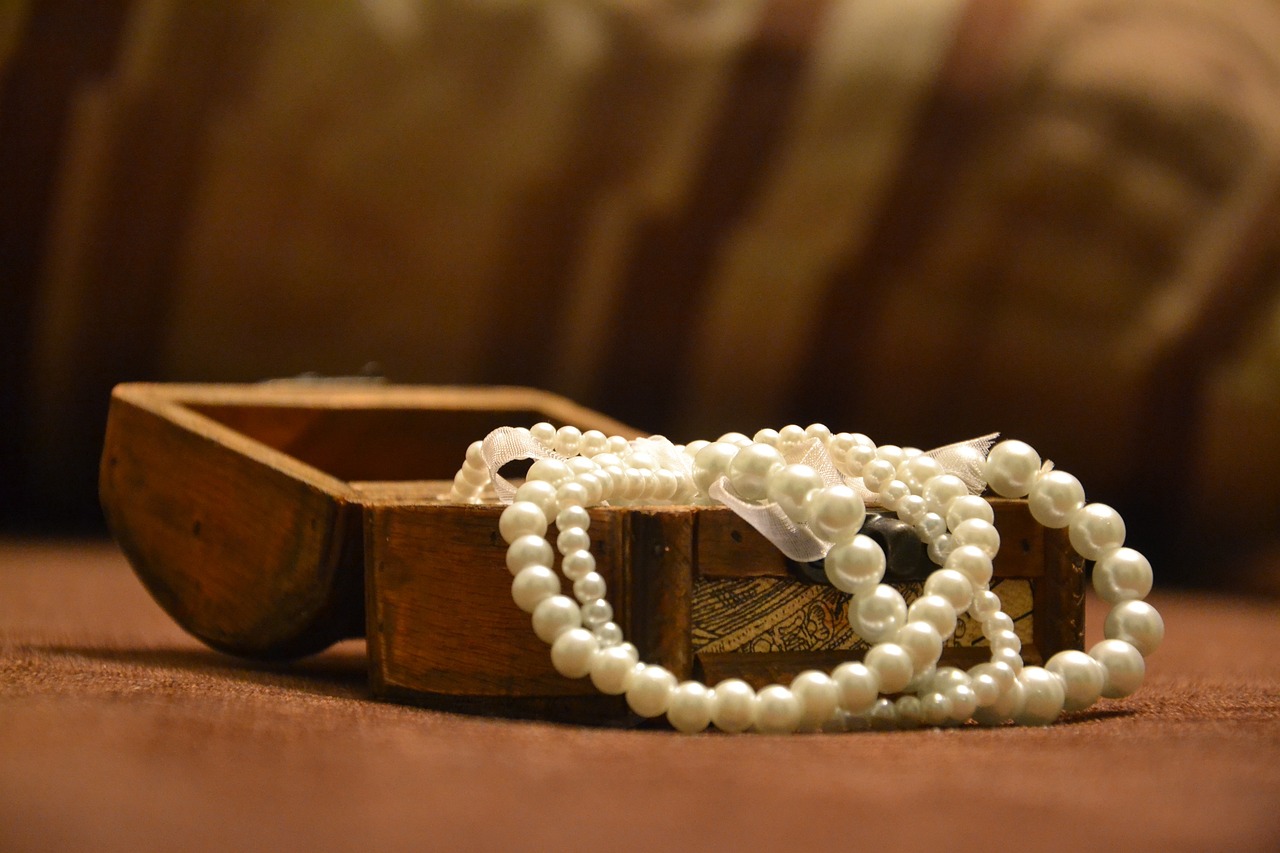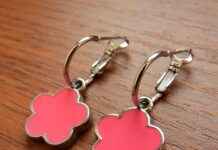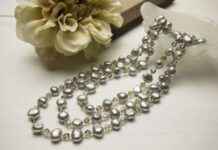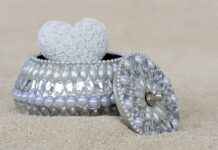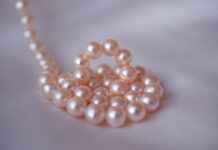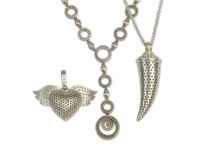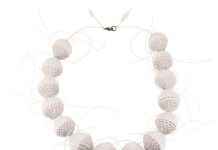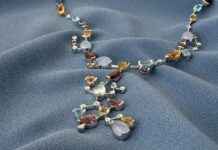This article delves into the leading ethical jewelry brands, examining their sustainable practices and the importance of supporting them for both the environment and social justice.
What is Ethical Jewelry?
Ethical jewelry refers to pieces created with a strong emphasis on environmental sustainability and social responsibility. This means that materials used in crafting jewelry are sourced and produced in ways that avoid exploitation and harm to both people and the planet.
Why Choose Ethical Jewelry?
Increasingly, consumers are choosing ethical jewelry for its positive impact on the environment and communities. By promoting fair trade practices and using eco-friendly materials, ethical brands offer a compelling alternative to traditional jewelry that often relies on harmful production methods.
The Environmental Impact of Jewelry Production
Traditional jewelry production often involves mining and manufacturing processes that can severely damage the environment. Ethical brands work hard to reduce their ecological footprint through sustainable practices, such as:
- Responsible sourcing of materials: Ethical brands prioritize sourcing from suppliers who adhere to strict environmental and social standards.
- Recycling and upcycling: Many brands focus on repurposing materials, which reduces waste and promotes a circular economy.
Social Responsibility in the Jewelry Industry
Ethical jewelry brands often advocate for fair labor practices, ensuring that workers receive fair wages and work in safe conditions. This commitment contributes significantly to community development and empowerment.
Top Ethical Jewelry Brands to Consider
Several brands have made a name for themselves in the ethical jewelry space, each with unique missions:
- Brilliant Earth: Renowned for its commitment to ethically sourced diamonds and gemstones, offering a range of beautiful, eco-friendly jewelry options.
- Soko: This brand connects artisans in Kenya to global markets, creating unique pieces while promoting fair wages and sustainable practices.
How to Identify Ethical Jewelry Brands
Identifying ethical jewelry brands involves looking for specific indicators:
- Certifications: Look for certifications like Fair Trade and Responsible Jewelry Council, which signify adherence to ethical standards.
- Transparency in sourcing: Ethical brands typically provide detailed information about their sourcing practices and supply chains.
The Future of Ethical Jewelry
The ethical jewelry market is on the rise, with more brands emerging that prioritize sustainability and social justice. This shift reflects changing consumer preferences and values.
- Trends in sustainable design: Innovations include the use of lab-grown diamonds and recycled materials, minimizing environmental impact.
- Consumer awareness: As awareness of ethical issues grows, so does the demand for ethical jewelry, encouraging brands to adopt sustainable practices.
In conclusion, supporting ethical jewelry brands not only contributes to a more sustainable future but also promotes social justice, making it a meaningful choice for consumers.
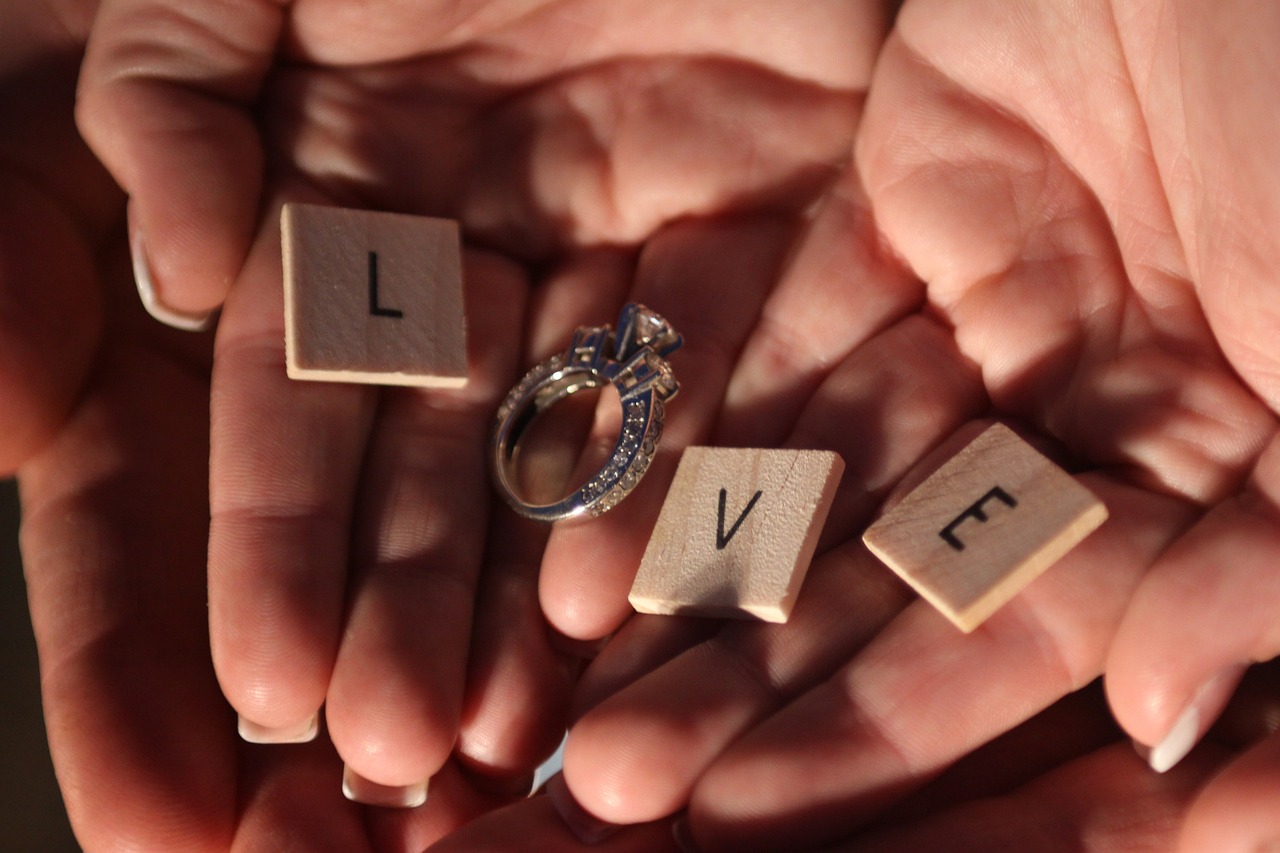
What is Ethical Jewelry?
Ethical jewelry is a term that encompasses jewelry pieces crafted with a strong emphasis on environmental sustainability and social responsibility. This means that the materials used in creating these pieces are sourced and produced in ways that do not exploit workers or harm the planet. Unlike traditional jewelry, which may involve harmful mining practices and labor exploitation, ethical jewelry brands prioritize the well-being of both people and the environment.
At the core of ethical jewelry is the commitment to fair trade practices. This ensures that artisans and workers receive fair wages and work in safe conditions. Many ethical brands also focus on using recycled materials or sustainably sourced gemstones, which significantly reduces the ecological footprint of their products. By choosing ethical jewelry, consumers are not only making a fashion statement but also supporting a movement aimed at driving positive change in the industry.
Another important aspect of ethical jewelry is the transparency in sourcing and production processes. Many brands openly share information about where their materials come from and how their products are made, allowing consumers to make informed choices. This level of transparency helps build trust between brands and consumers, fostering a community that values ethical consumption.
As awareness of ethical issues grows, more consumers are seeking out jewelry that aligns with their values. This shift in consumer behavior is encouraging more brands to adopt sustainable practices and contribute to a more ethical jewelry industry. In conclusion, ethical jewelry represents a significant step towards a more sustainable and equitable future in fashion, making it a worthy choice for conscientious consumers.
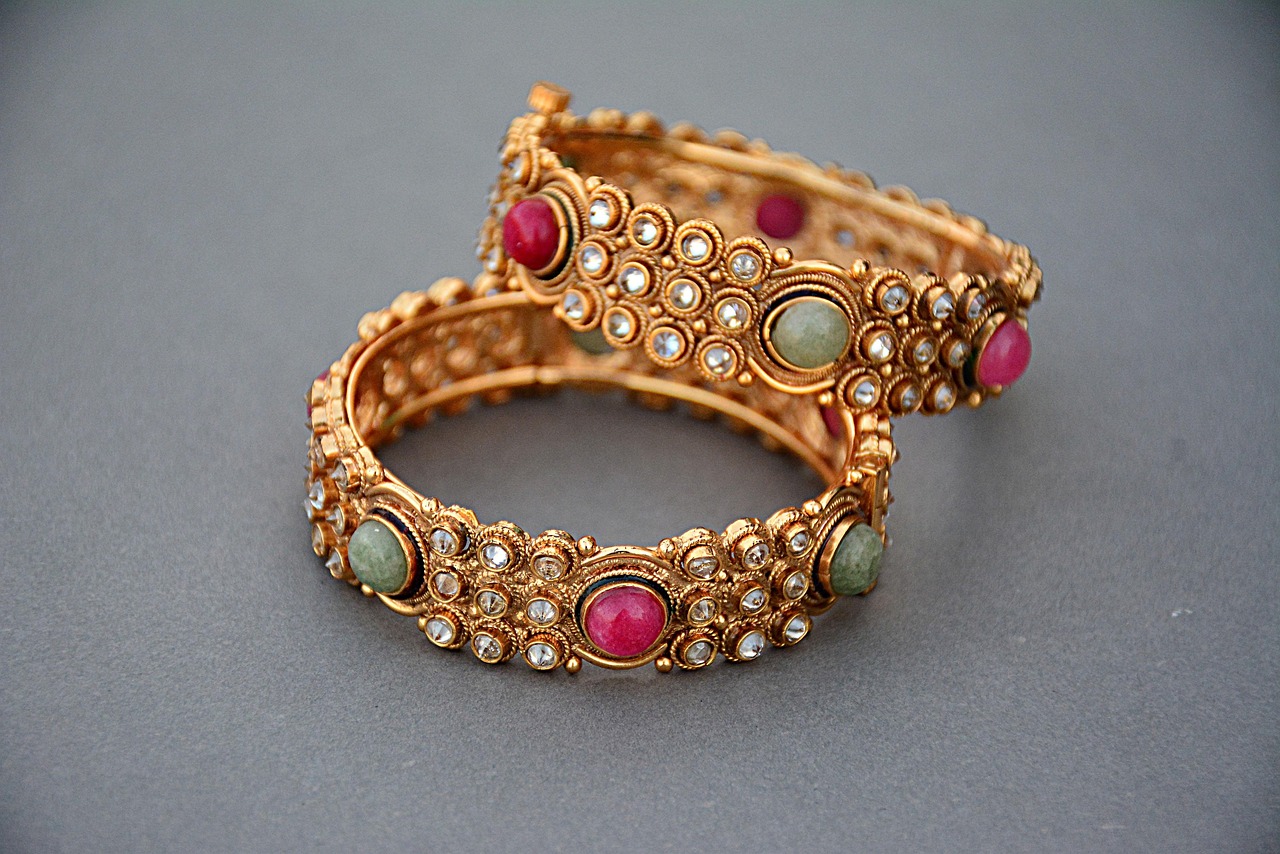
Why Choose Ethical Jewelry?
As awareness of environmental and social issues grows, consumers are increasingly making conscious choices in their purchasing habits. One area where this shift is particularly evident is in the jewelry industry. Ethical jewelry is becoming a preferred choice for many, as it embodies a commitment to sustainability and social responsibility. This article delves into the reasons why choosing ethical jewelry is not just a trend, but a necessary step towards a more equitable and sustainable future.
Positive Impact on the Planet
Traditional jewelry production often involves harmful mining practices that can devastate ecosystems and local communities. In contrast, ethical jewelry brands prioritize eco-friendly materials and sustainable practices. By opting for ethical jewelry, consumers contribute to reducing the environmental footprint associated with jewelry production. This includes supporting brands that use recycled metals and responsibly sourced gemstones, which help in conserving natural resources.
Empowerment of Communities
Another compelling reason to choose ethical jewelry is its focus on social equity. Many ethical brands are committed to fair trade practices, ensuring that artisans and workers receive fair wages and work in safe conditions. By purchasing ethical jewelry, consumers directly support artisans from marginalized communities, helping to empower them economically and socially. This creates a ripple effect, promoting community development and stability.
Transparency and Accountability
Ethical jewelry brands often emphasize transparency in their sourcing and production processes. They provide detailed information about where and how their materials are sourced, allowing consumers to make informed choices. This level of accountability fosters trust and encourages a more ethical marketplace.
Conclusion
Choosing ethical jewelry is not just about personal style; it is a statement about one’s values and commitment to the planet and its people. By supporting ethical brands, consumers can play a vital role in promoting sustainability, social justice, and responsible sourcing. As the demand for ethical jewelry continues to grow, it signals a positive shift towards a more conscious and equitable jewelry industry.
The Environmental Impact of Jewelry Production
The production of jewelry is a complex process that often begins with the extraction of raw materials from the earth. Unfortunately, this mining process can have significant negative effects on the environment. It can lead to habitat destruction, soil erosion, and pollution of local water sources. These environmental consequences are particularly concerning as they can disrupt entire ecosystems and threaten wildlife.
In addition to mining, the manufacturing processes involved in creating jewelry can also contribute to environmental degradation. The use of toxic chemicals in metal processing and the high energy consumption required for production can further exacerbate the ecological footprint of the jewelry industry. As consumer awareness of these issues grows, many are seeking alternatives that prioritize sustainability.
Ethical Jewelry Brands and Their Sustainable Practices
In response to the environmental challenges posed by traditional jewelry production, a number of ethical brands have emerged. These brands are committed to minimizing their ecological impact through various sustainable practices. For instance, they often use recycled metals and ethically sourced gemstones, which significantly reduces the need for new mining operations.
Responsible Sourcing of Materials
- Ethical brands prioritize sourcing materials from suppliers who adhere to strict environmental and social standards.
- This ensures that gemstones and metals are obtained responsibly, minimizing environmental harm.
Recycling and Upcycling Initiatives
Many ethical jewelry brands focus on recycling and upcycling materials. This approach not only reduces waste but also promotes a circular economy within the jewelry industry. By transforming old jewelry into new pieces, these brands are able to create unique designs while conserving resources.
In conclusion, the environmental impact of jewelry production is a pressing issue that calls for immediate attention. By supporting ethical jewelry brands that prioritize sustainable practices, consumers can contribute to a more eco-friendly industry and help protect our planet for future generations.
Responsible Sourcing of Materials
is a crucial aspect of the ethical jewelry industry, where brands are increasingly held accountable for their supply chains. Ethical jewelry brands prioritize sourcing materials from suppliers who adhere to environmental and social standards. This ensures that gemstones and metals are obtained responsibly, promoting a sustainable future.
Many unethical practices in traditional jewelry production can lead to significant environmental degradation and social injustices. For instance, mining operations often result in habitat destruction, pollution, and human rights violations. In contrast, ethical brands actively seek to mitigate these impacts by collaborating with suppliers who demonstrate a commitment to sustainable practices.
- Transparency: Ethical brands are transparent about their sourcing processes. They provide information regarding where and how materials are sourced, allowing consumers to make informed choices.
- Fair Trade Practices: Many ethical jewelry brands work with suppliers that adhere to fair trade principles, ensuring that workers are paid fairly and work in safe conditions.
- Environmental Standards: Brands often require their suppliers to comply with environmental regulations, minimizing ecological footprints and promoting sustainable practices.
Moreover, these brands often invest in community development initiatives, which can include supporting local artisans or funding educational programs. By prioritizing responsible sourcing, ethical jewelry brands not only provide consumers with beautiful products but also contribute positively to the communities involved in the production process.
In conclusion, the importance of responsible sourcing cannot be overstated. It is a fundamental principle that guides ethical jewelry brands in their mission to create a more sustainable and equitable industry. By supporting these brands, consumers can play a vital role in promoting environmental stewardship and social justice.
Recycling and Upcycling in Jewelry Design
In the ever-evolving world of fashion, ethical jewelry has emerged as a significant trend, particularly in the realms of recycling and upcycling. These practices not only help reduce waste but also foster a more sustainable approach to jewelry design.
Recycling in jewelry design involves taking old or discarded materials and transforming them into new pieces. This process helps to minimize the environmental impact associated with mining and manufacturing new materials. By utilizing recycled metals, such as silver and gold, ethical jewelry brands can significantly reduce their carbon footprint and conserve natural resources.
On the other hand, upcycling refers to the creative reuse of materials to create something of higher quality or value. Many ethical jewelry brands are now embracing this innovative approach. For instance, artisans may use vintage jewelry, broken pieces, or even industrial materials to craft unique and stylish items. This not only reduces waste but also adds a story and character to each piece, making them truly one-of-a-kind.
By promoting a circular economy, these brands contribute to a more sustainable future. This model encourages the continuous use of resources, thereby reducing the need for new raw materials and minimizing waste. As consumers become more conscious of their purchasing choices, the demand for recycled and upcycled jewelry is on the rise.
Moreover, supporting brands that prioritize these practices can lead to significant changes in the jewelry industry. It encourages other companies to adopt similar methods, ultimately leading to a broader shift towards sustainability. By choosing recycled and upcycled jewelry, consumers not only make a fashion statement but also contribute to a healthier planet.
In conclusion, the focus on recycling and upcycling in jewelry design is a powerful movement that promotes sustainability, reduces waste, and supports ethical practices. As more brands commit to these principles, the future of jewelry looks promising for both the environment and society.
Social Responsibility in the Jewelry Industry
has become a focal point for consumers and producers alike, as awareness of ethical practices continues to grow. Ethical jewelry brands are at the forefront of this movement, championing principles that prioritize the well-being of both people and the planet.
These brands not only focus on the aesthetic and material aspects of their products but also emphasize the importance of fair labor practices. This commitment ensures that every worker involved in the production process is compensated fairly and operates in a safe environment. By adhering to these principles, ethical jewelry brands contribute significantly to community development.
Moreover, supporting these brands can lead to positive social change. For instance, many ethical jewelry companies engage in initiatives that empower local communities. They often provide training programs that enhance the skills of artisans, enabling them to secure better-paying jobs and improve their livelihoods. This focus on education and skill development is crucial in regions where traditional employment opportunities may be limited.
Another essential aspect of social responsibility in the jewelry industry is transparency. Ethical brands typically disclose their supply chain practices, allowing consumers to understand where and how their jewelry is made. This transparency fosters trust and encourages consumers to make informed choices, aligning their purchases with their values.
In conclusion, the movement towards ethical jewelry is not just about aesthetics; it is a commitment to social justice, fair labor practices, and community empowerment. By choosing to support ethical jewelry brands, consumers can play an active role in promoting a more equitable and sustainable industry.
- Fair Labor Practices: Ensuring fair wages and safe working conditions.
- Community Development: Supporting local artisans and their communities.
- Transparency: Providing clear information about sourcing and production.
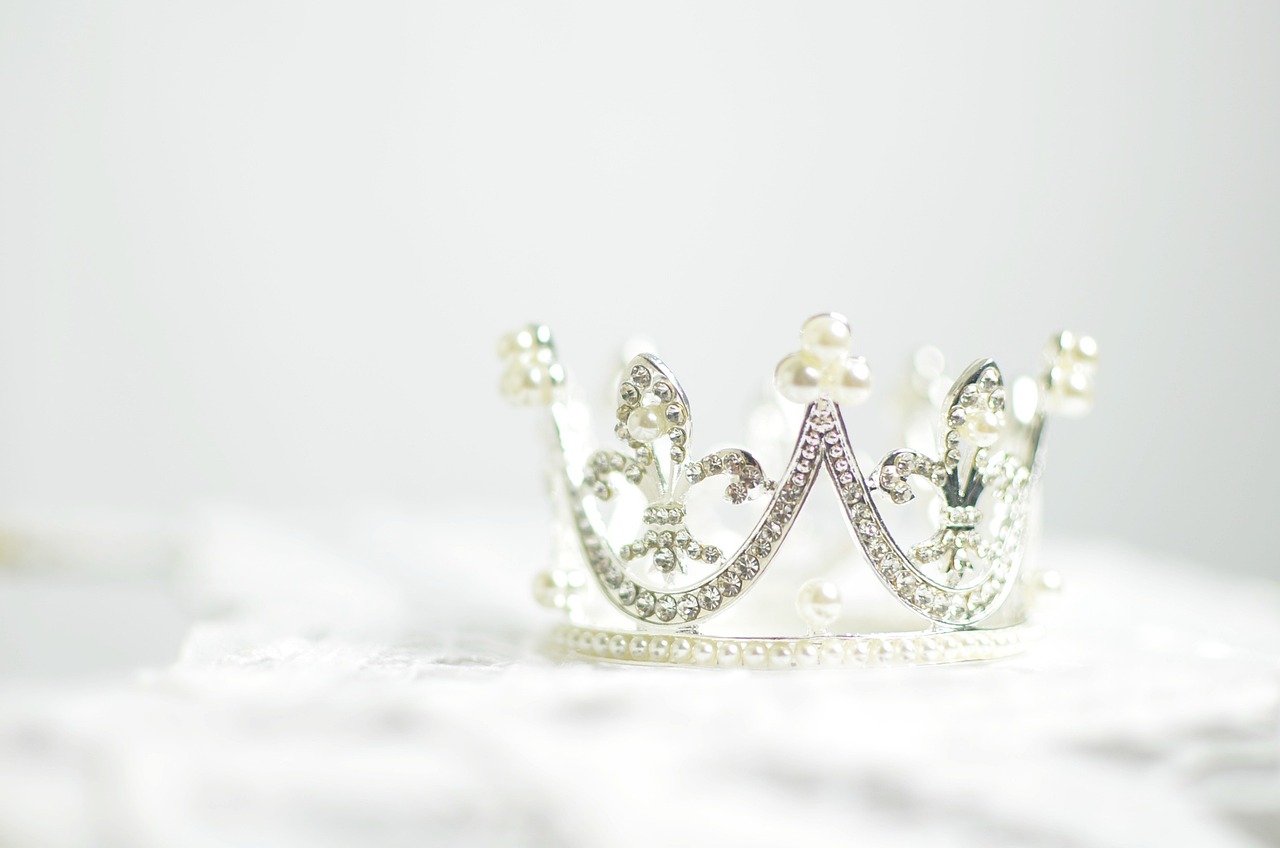
Top Ethical Jewelry Brands to Consider
In today’s world, where sustainability and social responsibility are becoming increasingly important, several brands have emerged as leaders in the ethical jewelry space. These brands not only create stunning pieces but also prioritize ethical practices that align with environmentally friendly and socially conscious values.
- Brilliant Earth: This brand is renowned for its commitment to ethically sourced diamonds and gemstones. Brilliant Earth ensures that all materials are conflict-free and sourced from responsible suppliers. Their jewelry is designed with the environment in mind, making it a popular choice among eco-conscious consumers.
- Soko: Soko is a unique brand that connects artisans in Kenya with global markets. By providing fair wages and promoting sustainable practices, Soko empowers local communities while offering beautifully crafted jewelry. Their pieces often incorporate traditional techniques, making each item a work of art.
- Catbird: Based in Brooklyn, Catbird is known for its handmade jewelry that uses recycled materials. The brand emphasizes the importance of ethical sourcing and supports local artisans. Catbird’s commitment to transparency and sustainability makes it a favorite among those who value both style and ethics.
- Fair Trade Jewelry Co.: This brand focuses on fair trade practices, ensuring that artisans receive fair compensation for their work. Fair Trade Jewelry Co. offers a wide range of unique designs that highlight the craftsmanship of artisans from around the world.
- Noonday Collection: Noonday Collection partners with artisans in developing countries, providing them with a platform to sell their handmade jewelry. The brand is dedicated to fair trade principles and aims to create economic opportunities for marginalized communities.
Supporting these ethical jewelry brands not only helps promote sustainable practices but also contributes to social justice and fair trade. By choosing to invest in jewelry that aligns with your values, you can make a positive impact on the world.
Brand 1: Brilliant Earth
Brilliant Earth is a pioneering force in the ethical jewelry industry, renowned for its commitment to ethically sourced diamonds and gemstones. The brand is dedicated to providing consumers with a wide array of stunning, eco-friendly jewelry options that do not compromise on beauty or integrity.
What sets Brilliant Earth apart is its rigorous focus on sustainability and social responsibility. The company sources its diamonds from conflict-free zones and ensures that all gemstones are acquired in a manner that respects both the environment and the communities involved in their extraction. This commitment extends beyond just sourcing; it encompasses the entire production process, aiming to minimize the ecological footprint.
Brilliant Earth also emphasizes the importance of transparency. Customers can trace the origin of their jewelry, gaining insight into how their pieces were made and the ethical practices involved. This level of transparency is crucial for consumers who wish to make informed choices about their purchases.
In addition to its commitment to ethical sourcing, Brilliant Earth is also a leader in promoting recycled materials. The brand uses recycled metals in its jewelry, significantly reducing the demand for newly mined resources. This practice not only conserves natural resources but also helps to lower the environmental impact associated with mining activities.
Furthermore, Brilliant Earth actively participates in community development initiatives. By supporting fair labor practices, the brand ensures that artisans and workers involved in the jewelry-making process receive fair wages and work in safe conditions. This holistic approach to ethical jewelry not only enhances the lives of individuals in the supply chain but also fosters a sense of community and empowerment.
In conclusion, Brilliant Earth stands out as a leader in the ethical jewelry market, offering exquisite pieces that reflect a deep commitment to sustainability and social justice. By choosing Brilliant Earth, consumers are not just purchasing beautiful jewelry; they are also supporting a brand that prioritizes ethical practices and contributes to a better world.
Brand 2: Soko
Soko is a pioneering brand that plays a crucial role in connecting talented artisans in Kenya with global markets. This innovative approach not only highlights the creativity and craftsmanship of local artisans but also ensures that they receive fair wages for their exceptional work. By promoting sustainable practices, Soko is redefining the jewelry industry, making it more inclusive and equitable.
The jewelry pieces created by Soko are not just accessories; they are unique stories that reflect the rich culture and heritage of Kenya. Each item is handcrafted using locally sourced materials, which supports the local economy and minimizes the environmental impact typically associated with mass production. Soko’s commitment to sustainability extends beyond materials, as they also focus on ethical production processes that empower artisans.
- Empowerment of Artisans: Soko provides artisans with the tools and training needed to enhance their skills, allowing them to produce high-quality jewelry that meets international standards.
- Fair Trade Practices: By ensuring that artisans receive fair compensation, Soko helps to uplift communities and improve living conditions.
- Environmentally Friendly Materials: The brand emphasizes the use of sustainable materials, reducing waste and promoting eco-friendly practices in jewelry making.
In addition to its ethical practices, Soko is dedicated to transparency. Customers can trace the origin of their jewelry, understanding the journey from artisan to consumer. This level of transparency fosters trust and builds a connection between the buyer and the maker, encouraging more conscious purchasing decisions.
As consumers become more aware of the impact of their choices, supporting brands like Soko that prioritize ethical practices is essential. By choosing Soko, customers are not only acquiring beautiful jewelry but also contributing to a larger movement towards social justice and environmental sustainability.
In conclusion, Soko exemplifies how ethical jewelry brands can create a positive impact on both artisans and the environment. By connecting local talent with global opportunities, Soko is paving the way for a more sustainable and equitable jewelry industry.
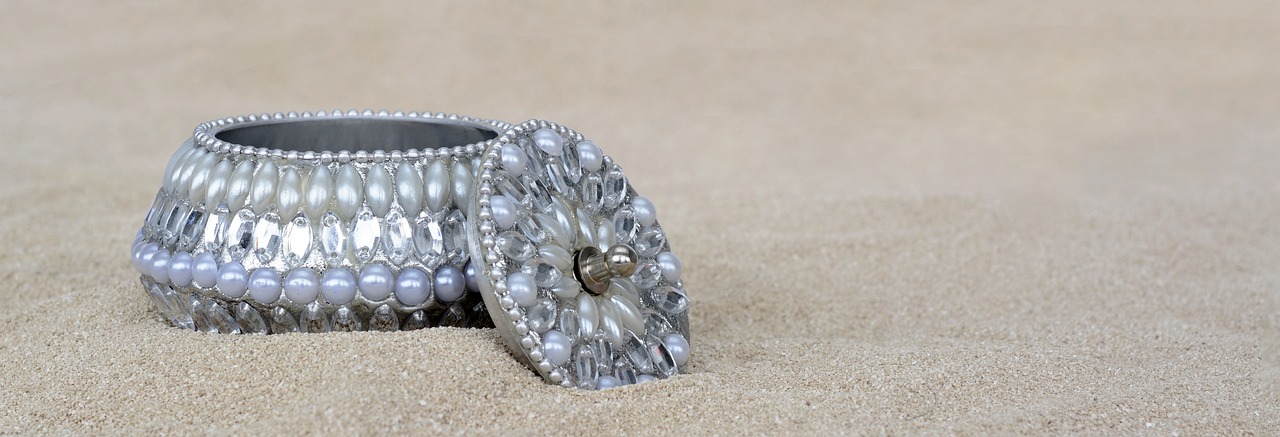
How to Identify Ethical Jewelry Brands
Identifying ethical jewelry brands is essential for consumers who wish to make informed purchasing decisions that align with their values. To begin with, it is crucial to look for certifications that signify a brand’s commitment to ethical practices. Recognized certifications such as Fair Trade and Responsible Jewelry Council ensure that the brand adheres to established standards in sourcing and production.
Another important factor is transparency in sourcing. Ethical jewelry brands often provide detailed information about their supply chains, allowing consumers to trace the origins of the materials used. This transparency not only builds trust but also empowers consumers to support brands that prioritize ethical practices.
Moreover, a commitment to sustainability is a hallmark of ethical jewelry brands. This includes the use of eco-friendly materials, such as recycled metals and lab-grown gemstones, which significantly reduce the environmental impact associated with traditional mining practices. By choosing brands that emphasize sustainability, consumers can contribute to a more circular economy.
Additionally, ethical brands often engage in social responsibility initiatives. This means they support fair labor practices, ensuring that workers are compensated fairly and work in safe conditions. Brands that invest in community development and support local artisans demonstrate a genuine commitment to social justice.
In summary, identifying ethical jewelry brands involves looking for key indicators such as certifications, transparency, a commitment to sustainability, and social responsibility. By prioritizing these factors, consumers can make choices that reflect their values and contribute positively to the environment and society.
Certifications to Look For
When exploring the world of ethical jewelry, understanding the certifications that indicate a brand’s commitment to ethical practices is essential. These certifications serve as a reliable guide for consumers who wish to make informed choices. Here are some key certifications to look for:
- Fair Trade Certification: This certification ensures that the jewelry is made under fair labor conditions. It guarantees that artisans and workers are paid fairly, work in safe environments, and have access to community development funds.
- Responsible Jewelry Council (RJC): The RJC certification indicates that a brand adheres to ethical, social, and environmental practices throughout its supply chain. Brands with this certification are committed to responsible sourcing of materials and promoting sustainable practices.
- Conflict-Free Certification: This certification ensures that the materials used, particularly diamonds and gemstones, are sourced from regions free from conflict and human rights abuses. It promotes peace and security in mining communities.
- EcoCert: EcoCert is a certification for products that meet strict environmental and social criteria. Jewelry brands with this certification demonstrate a commitment to reducing their ecological footprint.
- Fairmined: This certification guarantees that gold is sourced from responsible artisanal and small-scale mining organizations, ensuring fair wages and safe working conditions for miners.
By choosing jewelry from brands that carry these certifications, consumers can support ethical practices and contribute to a more sustainable and just industry. It is crucial to research and verify these certifications to ensure that the jewelry purchased aligns with personal values and ethical standards.
Transparency in Sourcing and Production
is a crucial aspect of the ethical jewelry industry, as it empowers consumers to make informed choices about their purchases. Ethical brands often go above and beyond to provide detailed information about their sourcing practices and supply chains. This commitment to transparency not only builds trust with consumers but also holds the brands accountable for their environmental and social impact.
Many ethical jewelry brands publish comprehensive reports that outline their sourcing methods, detailing where and how materials are obtained. This level of transparency enables consumers to understand the journey of each piece of jewelry, from the mine to the market. By sharing this information, brands demonstrate their dedication to ethical practices and allow consumers to align their purchases with their values.
| Key Aspects of Transparency | Description |
|---|---|
| Source of Materials | Brands disclose the origin of their gemstones and metals, ensuring they come from ethical and conflict-free sources. |
| Supply Chain Practices | Information about the supply chain is shared, including details about labor practices and environmental standards. |
| Certifications | Brands often showcase certifications that validate their ethical claims, such as Fair Trade or Responsible Jewelry Council certifications. |
Furthermore, consumers can look for brands that engage in third-party audits to verify their claims. These audits provide an additional layer of assurance that the brand adheres to its stated ethical practices. By choosing brands that prioritize transparency, consumers can make choices that support sustainable practices and promote social responsibility.
In conclusion, is vital for fostering trust between consumers and ethical jewelry brands. By providing clear information about their practices, brands empower consumers to make choices that reflect their values, ultimately contributing to a more sustainable and equitable jewelry industry.
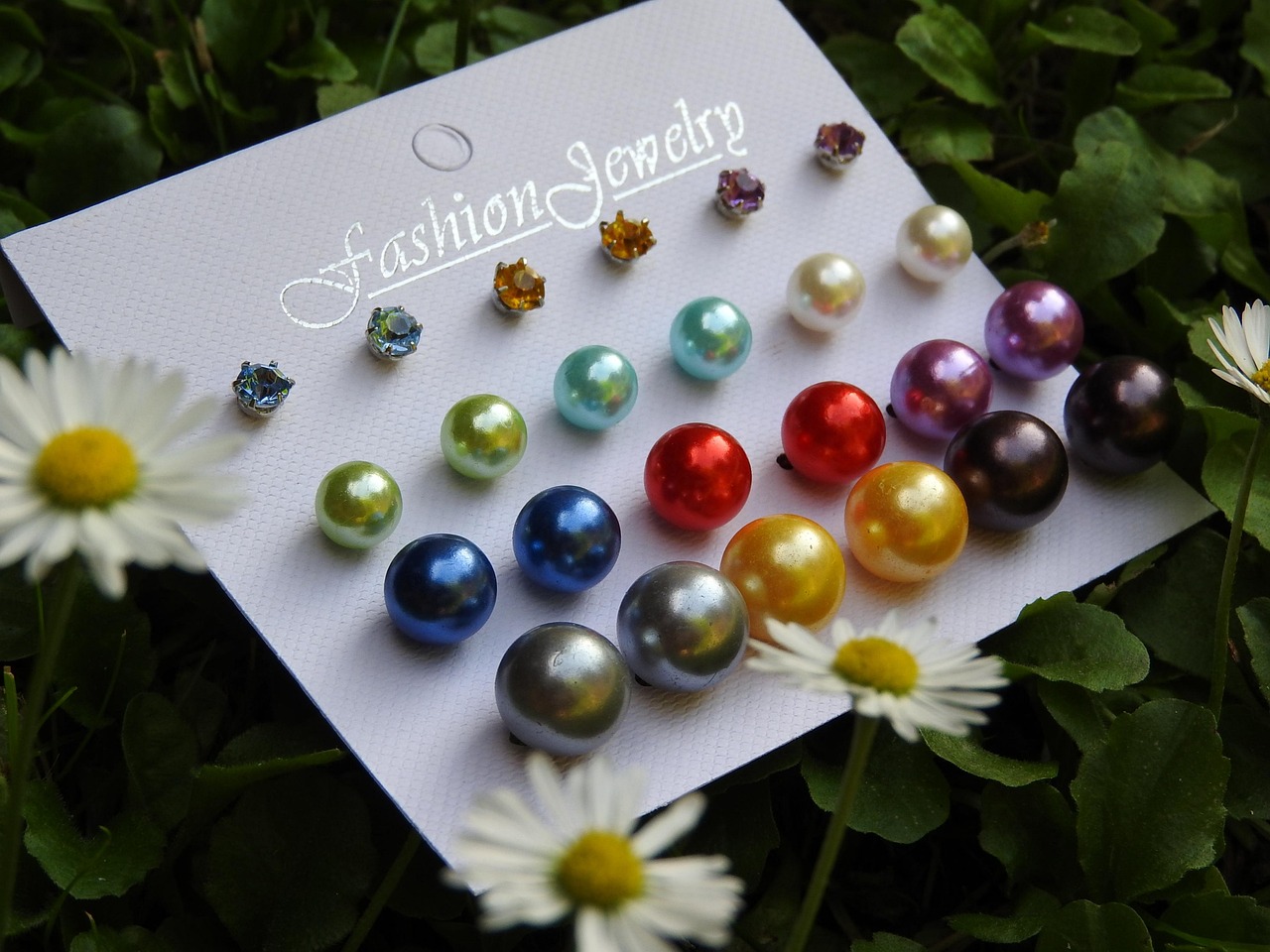
The Future of Ethical Jewelry
The ethical jewelry market is experiencing remarkable growth, driven by a surge of brands that prioritize sustainability and social justice. This shift is largely due to evolving consumer preferences and values, as more individuals seek to make responsible purchasing decisions. Ethical jewelry is no longer a niche market; it has become a significant movement within the fashion industry.
As consumers become increasingly aware of the impact their choices have on the environment and society, they are turning to jewelry brands that align with their values. Ethical jewelry is defined by its commitment to environmental sustainability and social responsibility. This means that materials are sourced in ways that do not exploit workers or harm the planet, ensuring that every piece of jewelry carries a story of integrity.
One of the most compelling reasons to choose ethical jewelry is the positive impact it has on communities and the environment. Traditional jewelry production often involves harmful mining practices that can devastate ecosystems and exploit vulnerable populations. In contrast, ethical brands strive to minimize their ecological footprint and promote fair trade practices, creating a more equitable industry.
Additionally, many ethical jewelry brands are embracing innovative practices such as recycling and upcycling materials. By repurposing existing resources, these brands contribute to a circular economy, reducing waste and decreasing the demand for newly mined materials. This not only benefits the environment but also fosters a culture of sustainability within the jewelry sector.
As the ethical jewelry market continues to expand, it is essential for consumers to educate themselves on how to identify trustworthy brands. Look for certifications such as Fair Trade and the Responsible Jewelry Council, which indicate adherence to ethical standards. Transparency in sourcing and production practices is also a key indicator of a brand’s commitment to ethical principles.
In conclusion, the future of ethical jewelry looks promising, with an increasing number of brands emerging that prioritize sustainability and social justice. As consumer demand for ethically produced jewelry rises, more companies are likely to adopt sustainable practices, making it easier for individuals to make choices that align with their values.
Trends in Sustainable Jewelry Design
In recent years, the jewelry industry has witnessed a significant shift towards sustainability. As consumers become more environmentally conscious, jewelry designers are responding with innovative practices that not only enhance the beauty of their creations but also minimize their ecological footprint. This section explores some of the most notable trends in sustainable jewelry design.
- Lab-Grown Diamonds: One of the most significant advancements in the jewelry sector is the rise of lab-grown diamonds. These stones offer an ethical and sustainable alternative to mined diamonds, as they are created using advanced technology that replicates the natural diamond formation process. Lab-grown diamonds are not only conflict-free but also have a lower environmental impact, making them a popular choice among eco-conscious consumers.
- Recycled Materials: Another trend gaining traction is the use of recycled materials in jewelry design. Many brands are now sourcing metals and gemstones from old jewelry pieces, effectively reducing waste and the need for new raw materials. This practice not only conserves resources but also gives a unique character to each piece, as they carry a history of their own.
- Innovative Techniques: Designers are increasingly adopting innovative techniques that reduce energy consumption and waste during the production process. Techniques such as 3D printing allow for precise designs with minimal material waste, while other methods focus on using natural dyes and sustainable packaging, further enhancing the eco-friendliness of the jewelry.
- Transparency and Traceability: Consumers are demanding more transparency about where and how their jewelry is made. Brands that provide detailed information about their sourcing practices and production processes are gaining trust and loyalty from customers. This trend emphasizes the importance of ethical practices and responsible sourcing in the jewelry industry.
As these trends continue to evolve, it is clear that sustainable jewelry design is not just a passing fad but a fundamental shift in the industry. By supporting brands that prioritize sustainability, consumers can contribute to a more ethical and environmentally friendly future.
Consumer Awareness and Demand
As consumer awareness of ethical issues continues to grow, the demand for ethical jewelry is anticipated to surge. This shift is not merely a trend; it reflects a broader societal movement towards sustainability and social responsibility. Consumers today are more informed and concerned about the origins of the products they purchase, leading to a significant change in purchasing behavior.
The rise in demand for ethical jewelry is prompting brands to reconsider their production methods and sourcing practices. Many consumers are actively seeking out jewelry that is made from sustainable materials and produced under fair labor conditions. This not only encourages brands to adopt more responsible practices but also fosters a culture of transparency in the jewelry industry.
Furthermore, the ethical jewelry market is becoming increasingly competitive. Brands that prioritize ethical practices are not just appealing to a niche market; they are capturing a growing segment of consumers who value social justice and environmental stewardship. As a result, more jewelry companies are beginning to highlight their commitment to ethical sourcing and sustainable practices in their marketing strategies.
In addition, the integration of technology in the jewelry sector is facilitating better tracking of materials from source to product. This transparency allows consumers to make informed choices and reinforces their trust in ethical brands. The use of certifications such as Fair Trade or the Responsible Jewelry Council is also becoming more common, providing consumers with a clear indication of a brand’s commitment to ethical practices.
In conclusion, as consumer awareness of ethical issues increases, the demand for ethical jewelry is expected to rise significantly. This growing trend will likely encourage more brands to adopt sustainable practices, ultimately contributing to a more equitable and environmentally friendly jewelry industry.
Frequently Asked Questions
- What makes jewelry ethical?
Ethical jewelry is crafted with a focus on sustainability and social responsibility. This means the materials are sourced without harming the environment or exploiting workers. Think of it as jewelry that not only looks good but also feels good to wear!
- Why should I choose ethical jewelry over traditional options?
Choosing ethical jewelry supports fair trade practices and reduces environmental impact. It’s like voting with your wallet; every purchase helps promote better practices in the industry. Plus, you get to wear unique pieces that tell a story!
- How can I identify ethical jewelry brands?
Look for brands that are transparent about their sourcing and production processes. Certifications like Fair Trade or Responsible Jewelry Council are great indicators. It’s all about doing a little homework to ensure your jewelry is as ethical as it is beautiful!
- Are ethical jewelry brands more expensive?
While some ethical jewelry can be pricier due to sustainable practices, many brands offer a range of price points. Think of it as an investment in quality and responsibility. You’re not just buying a piece of jewelry; you’re supporting a movement!
- What trends are emerging in ethical jewelry?
There’s a growing trend towards using lab-grown diamonds, recycled materials, and innovative designs that minimize environmental impact. It’s exciting to see how creativity meets sustainability in the jewelry world!

